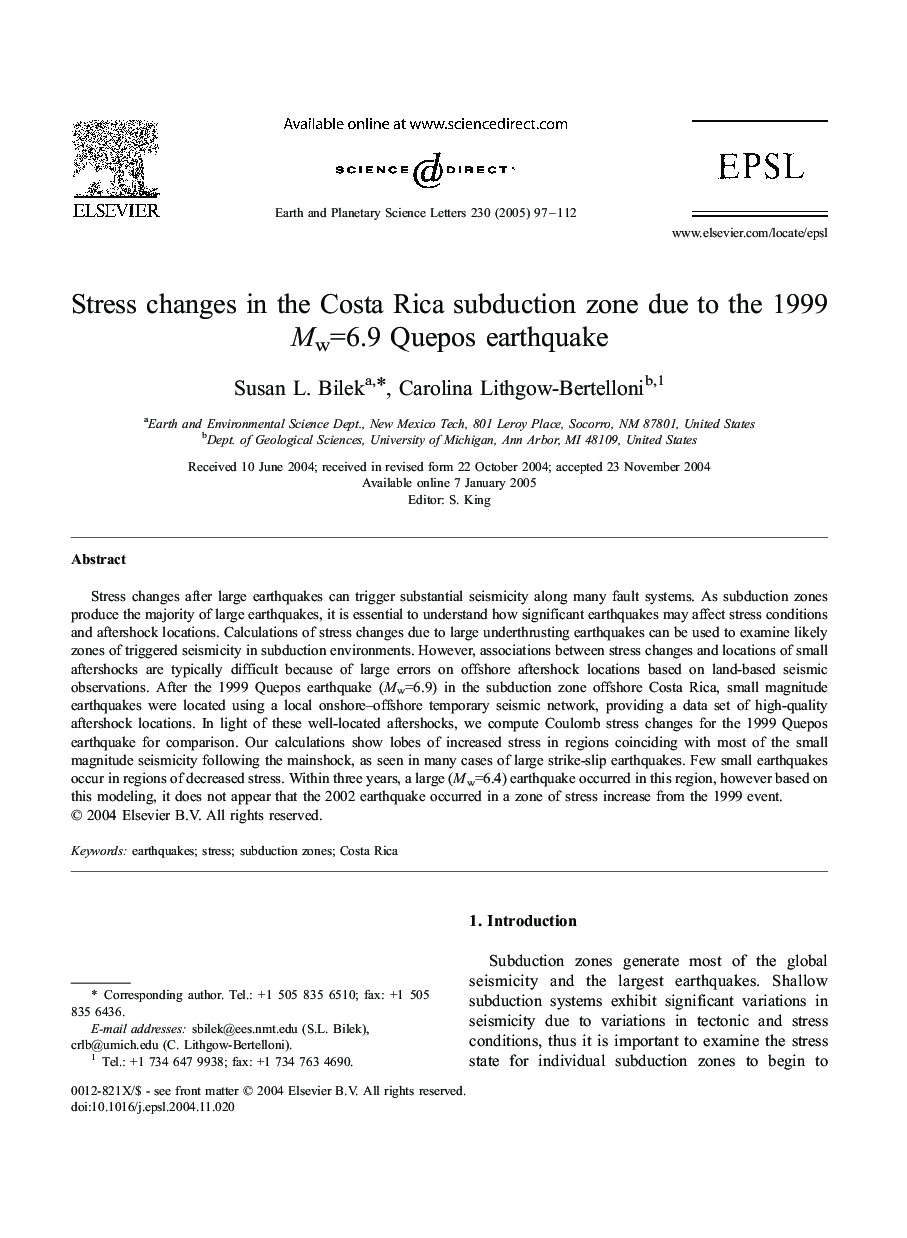| Article ID | Journal | Published Year | Pages | File Type |
|---|---|---|---|---|
| 9522531 | Earth and Planetary Science Letters | 2005 | 16 Pages |
Abstract
Stress changes after large earthquakes can trigger substantial seismicity along many fault systems. As subduction zones produce the majority of large earthquakes, it is essential to understand how significant earthquakes may affect stress conditions and aftershock locations. Calculations of stress changes due to large underthrusting earthquakes can be used to examine likely zones of triggered seismicity in subduction environments. However, associations between stress changes and locations of small aftershocks are typically difficult because of large errors on offshore aftershock locations based on land-based seismic observations. After the 1999 Quepos earthquake (Mw=6.9) in the subduction zone offshore Costa Rica, small magnitude earthquakes were located using a local onshore-offshore temporary seismic network, providing a data set of high-quality aftershock locations. In light of these well-located aftershocks, we compute Coulomb stress changes for the 1999 Quepos earthquake for comparison. Our calculations show lobes of increased stress in regions coinciding with most of the small magnitude seismicity following the mainshock, as seen in many cases of large strike-slip earthquakes. Few small earthquakes occur in regions of decreased stress. Within three years, a large (Mw=6.4) earthquake occurred in this region, however based on this modeling, it does not appear that the 2002 earthquake occurred in a zone of stress increase from the 1999 event.
Related Topics
Physical Sciences and Engineering
Earth and Planetary Sciences
Earth and Planetary Sciences (General)
Authors
Susan L. Bilek, Carolina Lithgow-Bertelloni,
